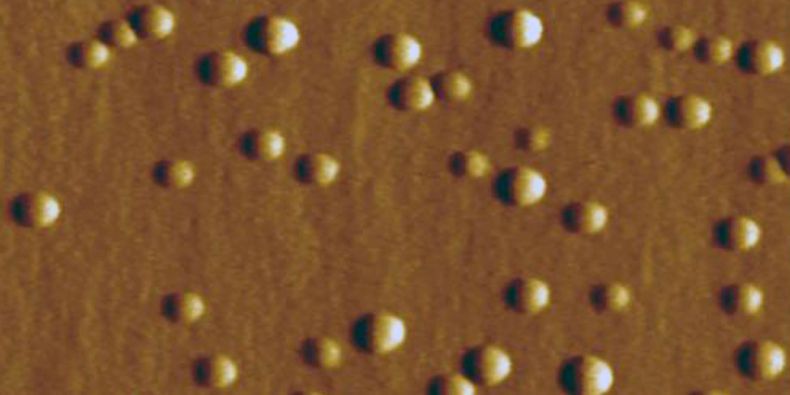More powerful and accurate lasers, flash drives with quicker writing ability and long life-spans, high-quality detectors for use in medicine, sources of irresolvable photons, components for quantum computers . . . All these instruments contain or one day will contain so-called quantum dots, which are studied by Petr Klenovský, a postgraduate student at the MU Faculty of Science.
Quantum dots are formed by the synthesis of two different materials, typically semi-conductors, one of which is only nanometres in size. By a special process a material is produced whose advantage lies in the fact that at the place of the nanolayer there are differences in the electron configuration. In combination with small dimensions, quantum dots form a so-called quantum pit, which binds together electrons from its surroundings. The advantage of quantum dots is that they function on the principle of quantum mechanics, which allows work with individual particles such as ions, electrons and photons.
“If you supply quantum dots with energy – using applicable radiation, for instance – the electrons are excited and reach a higher energy level," says Klenovský, who studies at the Department of Condensed Matter Physics, in explanation of the principle of quantum dots. “But this level is unstable and the particles try to return to their original state. So they have to rid themselves of excess energy, which is mostly done by photon radiation, i.e. light." The resulting photons have a well-defined wavelength, so the dots can serve as a basic component of high-precision lasers.
Klenovský is concerned with the measuring of this radiation and simulation of the electron configuration of dots. He examines materials composed of two semi-conductors, specifically indium arsenide (InAs) and gallium arsenide (GaAs). Production of these is very demanding, both technologically and financially. Klenovský describes their formation thus: “One method exploits the fact that the base semi-conductor (gallium arsenide) mounts a bombardment with individual indium and arsenic atoms. They react on the surface and form a kind of cluster or pyramid of indium arsenide, and these are the quantum dots we are talking about."
Better information transmission
The properties of the dots are helpful in the creating of lasers that serve for information transmission in optical fibres. They are more precise and require less energy than conventional lasers in order to generate light. “Your readers have used the dots even if they don't know they have – in connecting to a website located in the United States, for instance," says Klenovský.
In the opinion of Klenovský, quantum dots could be used in a similar way in computers, where they would replace information transmission that uses metal conduits for optical fibres. “Unfortunately we are not yet able to make functional quantum dots on silicon, which is the basis of computers as we know them," says Klenovský, who is also a member of the Functional Properties of Nanostructures research group of the Central European Institute of Technology. “Although they already exist," he continues, “they are not capable of radiating photons effectively owing to great differences between the properties of the semi-conductors of which they are composed."
While quantum dots are already used for information transmission in underwater optical cables, for instance, their use in the production of flash drives or as sources of identical photons, making possible safer and less 'tappable' communication, is still at the research stage.
